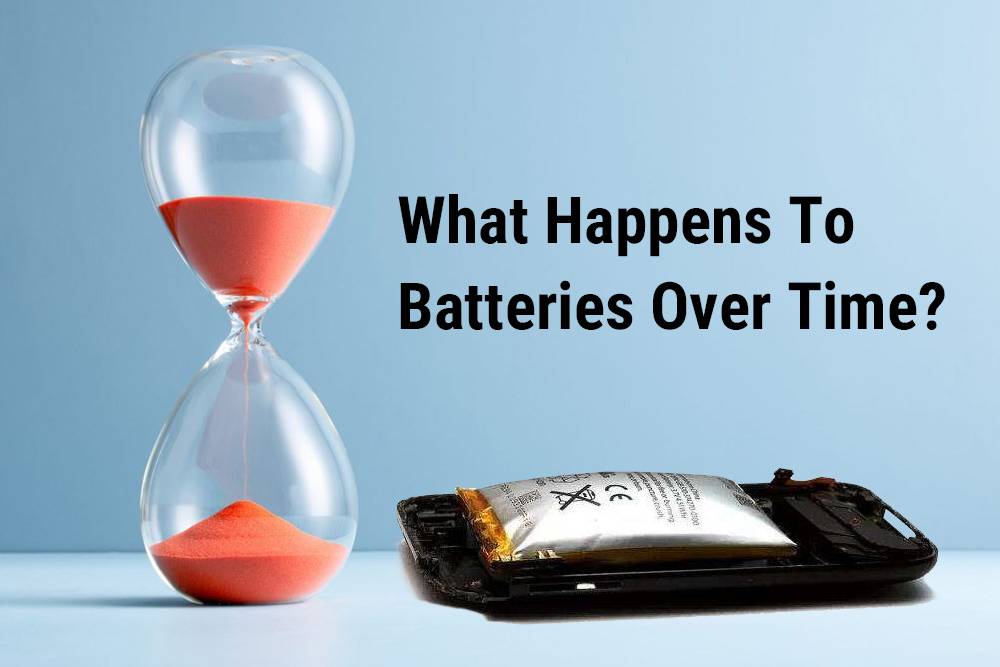Rechargeable batteries face eventual deterioration due to various factors. The charging and discharging cycles, chemical reactions within the battery, and age contribute to their decline. Over time, the battery’s ability to hold a charge diminishes, leading to reduced performance and eventual failure. Understanding these factors provides insights into the gradual decline of rechargeable batteries, shedding light on their inevitable demise.
The Basics of Rechargeable Batteries
Rechargeable batteries, unlike disposable ones, are eco-friendly and cost-effective. They vary in sizes, from AA to laptop or electric vehicle packs. Fundamentally, they consist of positive (cathode) and negative (anode) electrodes in an electrolyte solution for ion flow during charging and discharging cycles.
- Basic Structure: Rechargeable batteries have positive and negative electrodes immersed in electrolyte, enabling ion movement during charging and discharging.
- Charging Process: Charging reverses chemical reactions, driving ions back to their original positions, storing energy for later use.
- Usage Cycle: When drawing power for devices, stored ions move through the electrolyte, creating electricity along with heat.
Different types, like NiCd, NiMH, and Li-ion, offer unique characteristics for various applications. Understanding these principles lays the groundwork for exploring why rechargeable batteries face eventual decline. Stay tuned for more insights!
What Causes Rechargeable Batteries to Die?
Rechargeable batteries offer convenience but face eventual decline due to various factors.
- Capacity Fade: Repeated charging cycles cause ions to get trapped in the battery’s electrodes, leading to diminished capacity over time.
- Self-Discharge: Batteries slowly lose charge even when unused, influenced by internal chemical reactions specific to battery chemistry.
- Heat Impact: High temperatures accelerate chemical reactions, hastening capacity degradation and overall deterioration.
- Overcharging/Deep Discharging: Extreme charging practices stress electrodes, causing irreversible damage and impacting longevity.
To extend battery life, manage charging habits by avoiding frequent full charges and preventing complete depletion before recharging. Understanding these factors helps implement proper care practices for rechargeable batteries.
Factors that Affect Battery Lifespan
To extend the life of your rechargeable batteries and save money, consider these key factors:
- Temperature Impact: Extreme temperatures, whether hot or cold, can damage batteries. High temperatures accelerate chemical reactions, causing faster degradation, while very low temperatures temporarily reduce capacity.
- Usage and Charging Frequency: Rechargeable batteries have a limited number of charge cycles. Frequent use and improper charging, such as overcharging or undercharging, can shorten their lifespan.
- Device Power Consumption: The type of device you use with rechargeable batteries matters. Devices drawing more power put additional strain on batteries, causing faster drainage.
- Storage Conditions: Proper storage is crucial. Storing batteries without use for extended periods, especially in damp environments, can lead to loss of charge or leaks.
- Battery Quality: Consider the quality of the rechargeable battery. Cheaper or counterfeit brands may have lower-quality components, resulting in a shorter lifespan.
By understanding and addressing these factors, you can optimize your rechargeable batteries’ lifespan and enhance their performance across multiple charge cycles!
Signs That Your Rechargeable Battery is Dying
Recognizing when your rechargeable battery is near the end can save you from unexpected disruptions. Look out for these signs:
- Decreased Runtime: If your device requires more frequent charging than usual, it signals diminished battery capacity, indicating it’s approaching the end.
- Poor Device Performance: Longer power-up times or sudden shut-offs when there should be remaining battery life are indicators of a failing rechargeable battery.
- Physical Changes: Bulging or leaking batteries are signs of internal damage. Address these physical changes promptly.
- Temperature Fluctuations: Excessive heat during device use or charging may point to underlying battery issues, signaling potential failure.
- Unusual Noises: Buzzing or clicking sounds from the device while in use or plugged in can be a sign of impending battery failure.
Being alert to these signs allows you to take proactive measures, either replacing or repairing your rechargeable batteries before they completely fail. Stay tuned for tips on extending their lifespan in our next section!
How to Extend the Life of Your Rechargeable Batteries
To ensure your rechargeable batteries last longer, follow these simple tips:
- Use the Right Charger: Employ a charger designed for your battery type to prevent overcharging, preserving the battery’s life.
- Avoid Full Discharges: Unlike older batteries, rechargeables perform best when consistently topped up rather than fully drained.
- Proper Storage: Keep batteries in a cool, dry place away from extreme temperatures and direct sunlight to maintain their charge capacity.
- Partial Discharge Before Storage: If not in use for an extended period, partially discharge batteries before storing to balance internal chemistry and prevent self-discharge.
- Clean Contacts Regularly: Improve performance by cleaning battery and device contacts with rubbing alcohol and a cloth or cotton swab.
- Mindful Device Usage: Avoid unnecessary use of power-hungry applications to reduce strain on the battery and extend its overall lifespan.
Following these guidelines ensures your rechargeable batteries provide reliable power whenever needed, saving you money in the long run!
Sustainable Alternatives to Traditional Rechargeable Batteries
Consider these eco-friendly alternatives to traditional rechargeable batteries:
- Disposable Batteries from Recycled Materials: Crafted with recycled components, these single-use batteries minimize environmental impact, providing an eco-conscious option for regular replacements.
- Solid-State Batteries: Utilizing advanced materials, solid-state batteries enhance energy density while reducing reliance on toxic elements, offering a greener alternative to conventional lithium-ion designs.
- Supercapacitors: Storing energy electrostatically, supercapacitors are durable and rapidly charge, presenting an environmentally friendly choice for power storage.
- Renewable Energy Sources: Embrace solar-powered chargers or kinetic energy harvesting devices to reduce reliance on traditional batteries, harnessing natural resources for sustainable power.
By incorporating these alternatives, we can contribute to a greener future, minimizing electronic waste and promoting responsible battery use. Remember, small choices can make a big impact on our planet!
FAQs
Are rechargeable batteries better than alkaline?
Rechargeable batteries and alkaline batteries have distinct advantages based on specific needs. Rechargeable batteries are reusable, reducing waste and cost over time, making them suitable for high-drain devices and frequent use. Alkaline batteries are convenient for low-drain devices and situations where long shelf life is required. Choose the battery type that aligns with your specific needs for optimal performance.
What are the advantages of rechargeable batteries?
Rechargeable batteries offer significant advantages over non-rechargeable batteries. They are a more eco-friendly solution, reducing battery waste and minimizing environmental impact. Rechargeable batteries have a lower impact on air and water pollution, acidification, and global warming. They also help conserve natural resources. With longer service life and the potential for cost savings, rechargeable batteries are a sustainable and economical choice.
When can I use rechargeable batteries instead of alkaline?
Rechargeable batteries are suitable for devices with long run times and constant discharge, such as toys, remotes, and video game controllers. They are a cost-effective and eco-friendly choice, reducing waste and saving money in the long run. Alkaline batteries are better suited for low-drain devices that require power over an extended period. Choose rechargeable batteries for high-power, frequently used devices, and alkaline batteries for low-power, intermittent use.
What are the types of rechargeable batteries?















